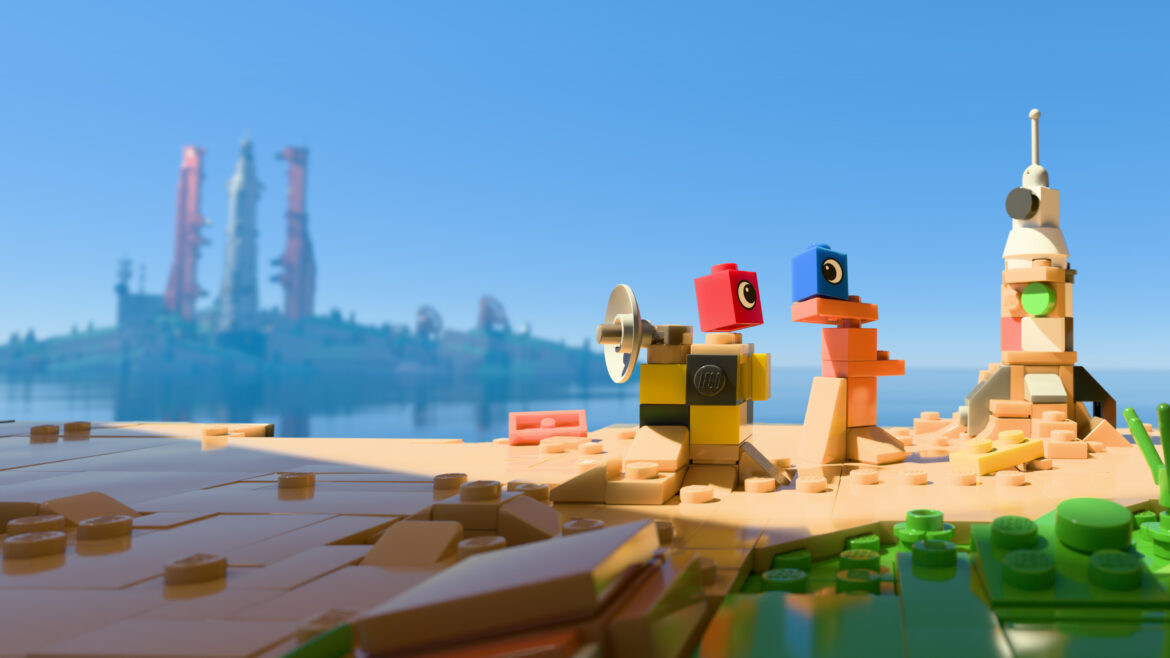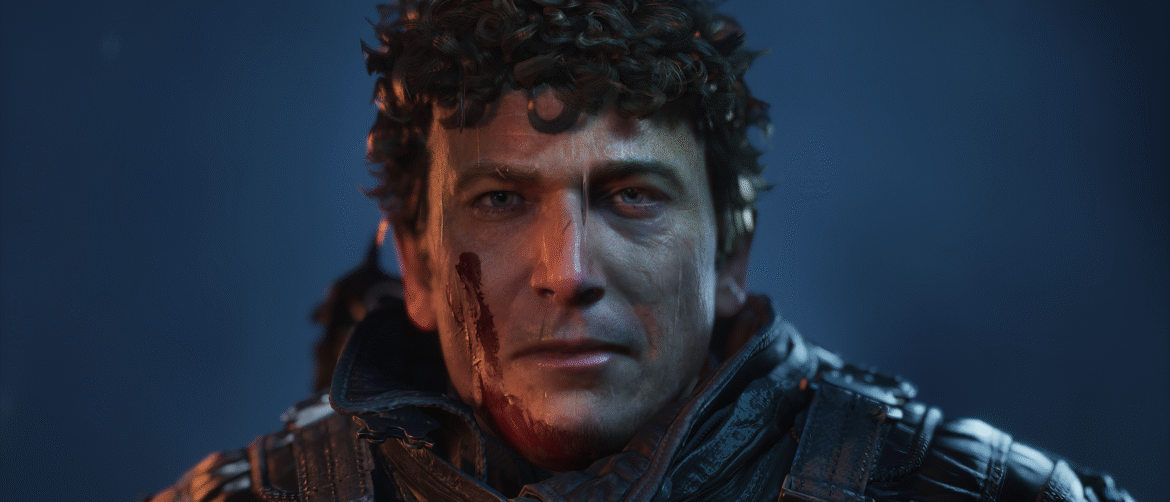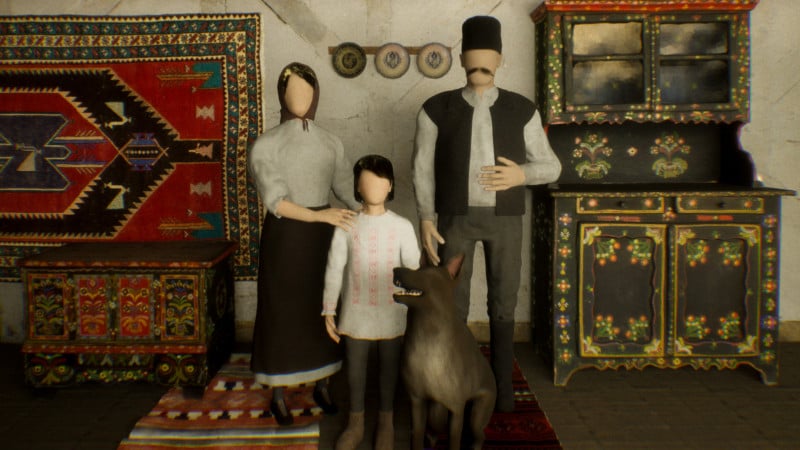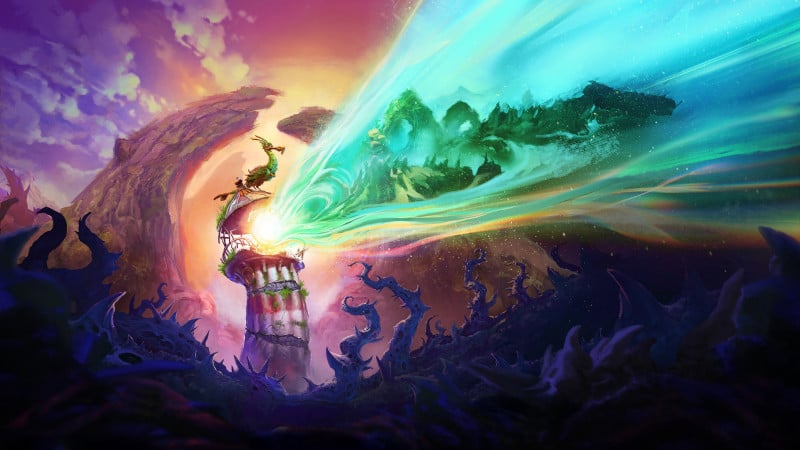A spiritual successor to the excellent Lego Builder’s Journey, Lego Voyagers takes the serene puzzle action of its predecessor to new heights with a focus on two player co-op play. A celebration of friendship and creativity, I went hands-on with roughly half an hour of the game as part of an early preview session ahead of Gamescom 2025 and enjoyed every second.
For starters, it’s easily one of the best-looking Lego games ever made – capturing the look and feel of the popular building toy perfectly. Its world is crafted entirely from real-life Lego pieces, rendered with loving attention to detail. The way that tiles fit together with a tiny visible gap or at slightly uneven angles is not only impressively realistic, but lends the world a pleasantly tactile appearance.
It’s life-like, but beautiful too. Everything is bathed in soft atmospheric lighting that bounces off the plastic surface to give it an almost dream-like glow that’s incredibly warm and cozy. Even those with no affinity for Lego will be able to appreciate that Voyagers is one stunning game.
You may like
1×2
(Image credit: Annapurna Interactive)
You and your companion play as tiny little bricks (part 3005 for all the real Lego pros out there), complete with a cute animated eye. These unassuming protagonists are simply adorable, cutely rolling around the screen like characters from a stop-motion animation.
Rather than speaking, your character sings, triggered by the press of a button, adding to the gentle and melodic background music and occasionally helping you solve the many puzzles.
Like Builder’s Journey, this is ultimately a game about the joy of getting from A to B, so your objective is simply figuring out how to progress. You can attach yourself to almost any visible stud (that’s the round bit on the top of a Lego brick) in the game with a satisfying click, so it’s sometimes as easy as jumping between a few exposed points up the side of your obstacle.
There are more complex encounters, too, that require attaching yourself to loose bricks. Once stuck, you can roll around with them for easy transport, then hold a key to place them in order to construct bridges or towers.
As this is a co-op-only experience, you can expect lots of moments where teamwork is a necessity. One puzzle, for example, had my co-op partner triggering catapults to send valuable bricks my way, while another had them activating switches to keep vital platforms accessible.
If you’ve tried the likes of Split Fiction or It Takes Two, then you know roughly the kind of design to expect here, and I certainly felt that it scratched my itch for a new co-op adventure. As with those games, Lego Voyagers will feature a Friend’s Pass system in addition to full local co-op that lets a buddy join your game at any time for free.
(Image credit: Annapurna Interactive)
There are plenty of diversions along the way, too, clearly intended to evoke feelings of companionship. I never thought I would get emotional over two plastic bricks sitting on a swing staring into the sunset, but the excellent presentation means that it’s surprisingly poignant and effective.
This is on top of a host of amusing and creative ways to interact with the world, such as bizarre-looking flowers that shoot up into the air like a firework as you brush past, the little bucket piece you can wear as a hat, or being able to stick yourself to the scuttling crabs represented by red horizontal clip tiles – look up Lego piece 60470 and you’ll see the vision!
Although I ultimately didn’t get to see much of the world in my brief preview session, there’s something surprisingly somber about it. The areas you explore are full of industrial debris, abandoned train tracks, and hints of something much larger than you.
It’s all very mysterious, and I’m eager to see whatever Lego Voyagers has in store for me and a friend when it launches for PlayStation, Xbox, Nintendo Switch, and PC on September 15.





